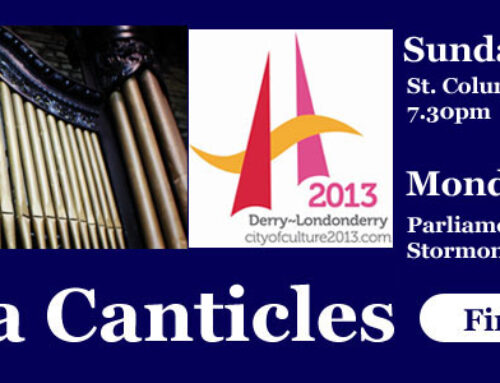Sam Burnside Publishes Mrs Nettlebed’s Year
Derry author encourages intergenerational reading with new book based around the seasons
Samuel Burnside, founder and former first director of the Verbal Arts Centre in Derry~Londonderry, is well known for his award-winning poetry, prose and editing. His latest venture, however, has taken him into the realm of children’s writing, as he prepares to launch his new book, Mrs Nettlebed’s Year.
Set in the Woods, where the animals live, Mrs Nettlebed’s Year is steeped in nature and includes 20 short stories based around the seasons. The reader can therefore follow the mysterious and magical Mrs Nettledbed throughout spring, summer, autumn and winter, as she heals sick animals and gives advice to those in need.
‘Mrs Nettlebed’s Year was originally written for our five grandchildren,’ says Burnside. ‘I used to tell our own children bedtime stories and these kind of morphed into stories for the grandchildren. Two of them are in western Australia and three are in Bath, so it’s not easy to tell them bedtime stories!’
Aimed at five to 10 year-olds, Mrs Nettlebed’s Year is infused with little nuggets of wisdom, in a similar way to the old Brer Rabbit stories. ‘They’re supposed to inspire and celebrate life,’ Burnside explains. ‘Mrs Nettlebed is a life-force – she comes when she’s needed. There’s an element of the old wisdom stories in them, although not intentionally so.’
Having been influenced by books like Kenneth Grahame’s seminal novel The Wind in the Willows as a boy, and grown up ‘surrounded by nature’, Burnside hopes that his benevolent new character will inspire young readers to adventure in the outdoors and fall in love with nature in turn.
‘When I was a child, I would go out in the mornings and come home late at night,’ Burnside recalls. ‘I was surrounded by nature, but today a lot of children live in cities. They don’t get out and touch and feel nature, and their parents are frightened to let them out. I think it’s really important that children should feel comfortable and feel engaged with the natural world, to feel an affinity with it.’
Never an artist to rest on his laurels, Burnside hasn’t forgotten his poetry of late, and over the past few weeks has had his words exhibited in both Belfast and Derry.
The Lagan Song exhibition was a collaboration with Bangor artist, Leslie Nicholl, exploring the Rivers Lagan and Foyle in paintings and poems – their tributaries and the communities that have grown up around them.
‘It’s a much more serious and socially aware activity than writing Mrs Nettlebed’s Year,’ Burnside laughs. ‘We’re trying to address some of the issues about the human condition in Northern Ireland. It’s divided up into three parts, each inspired by a poetic text.’
Having first met Nicholl back in the 1990s, Burnside has collaborated with him on numerous occasions over the years, combining images and poetry to great effect. ‘It’s very easy to finish up with a painting there and a poem here, so the painting appears to illustrate the poem, but that isn’t what it’s about with us,’ Burnside adds. ‘It’s about complementing each other, using two art forms to express something.’
Also exhibited throughout November – this time at St Columb’s Cathedral in Derry – was Burnside’s poem, ‘Remembrance’, which he specially composed to mark the centenary of the First World War.
Once again, his words were complemented by Nicholl’s image; his iconic paintings of war victims formed part of the wider Remembering Derry’s role in the First World War series of events.
‘Remembrance’ was inspired by visits to Ely Cathedral and St Columb’s Cathedral, but also considers the recent shooting down of a civilian aeroplane in the Ukraine.
Meanwhile, the paintings – showing a stretcher-bearer from an original First World War photograph, and the face of a victim in the air disaster – were influenced by Nicholl’s visits to Germany and London, using First World War documents as references.
That project perhaps seems a world away from Mrs Nettlebed’s Year, but Burnside is passionate about making literature accessible to all – readers young and old. ‘These stories are meant to be read by children, but also to children,’ Burnside explains.
‘Sharing with an audience, even if it’s only an audience of one or two, especially across the generations, has always been important in the realm of storytelling. So has the sense of theatre – of being there in the moment, together with others, communing and growing and exploring in the world of the imagination.’
Mrs Nettlebed’s Year is published by Green Road Press, and is available to order.
